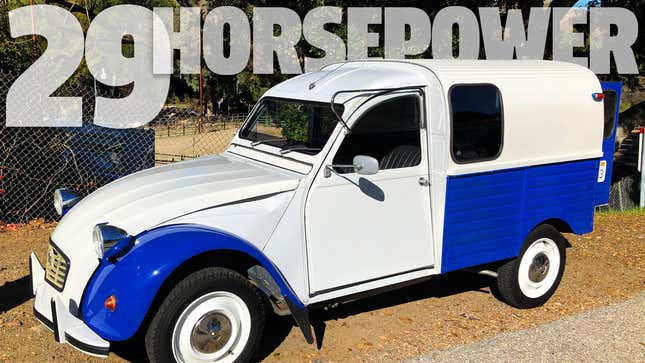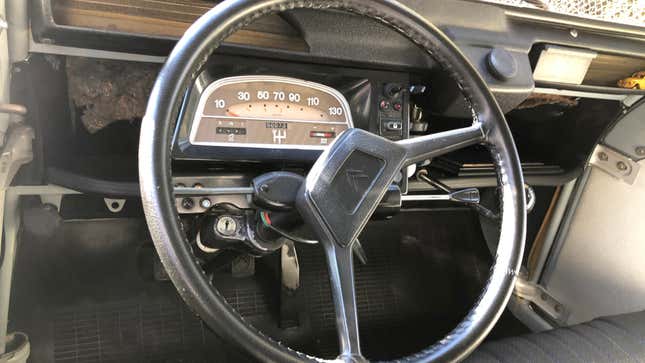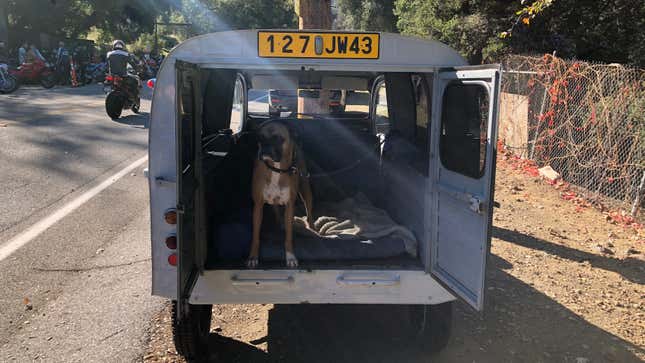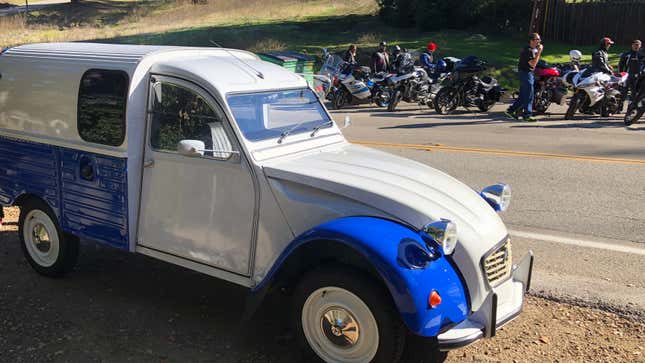
I’ve seen a few 2CVs here and there, but I’d never seen the delivery van in the wild until last weekend when I found one weaving through the canyon roads of the Santa Monica Mountains. I had to catch up with the driver to ask him some questions like “How did you make it up the mountain with no horsepower?” and, “Are you sure this is a good idea?”
2CV is short for deux chevaux-vapeur, which essentially translates to “two tax horsepower.” To be clear, the car never had two horsepower; when it first came out in 1948 it had nine. Deux chevaux was the vehicle’s tax classification based on an equation that France used to determine how much tax was due at registration. The tax was originally a function of engine bore, stroke, RPMs and number of cylinders. The first 2CVs had a 375 cc flat-twin engine resulting in a low tax, and the car itself was about half the cost of an average American car at the time due to it being the most basic, bare-bones car possible.

Citroen only sold a few thousand 2CVs in North America. However, it still surprises me how rare it is to see one over here since the company sold about five million of them globally with production spanning six decades from the late 1940s to 1990. About 1.2 million of them were the van variant, known as the fourgonnette. The van has the same specifications, except that it had a larger rear section made of corrugated sheet metal. The earlier versions had lower gearing to help pull around any extra load, and the front passenger seat was removable in case extra space was needed.
This fourgonnette was driven by a Frenchman who we will call “Raphael” because that’s his name. His 2CV was restored by the previous owner after having it brought over from Belgium where it had been a postal van.
“You can still see the yellow paint in some places,” He told me.

This one was from 1971 and had the largest engine that was sold in a 2CV, a whopping 602 cubic centimeters of displacement. So it didn’t have nine horsepower, it had 29, which mostly answered my first question. He was parked across from several motorcycles, and I’m sure every one of those bikes had more horsepower than this car.

“It will go 70 if it is flat, but it has to be flat,” he said, “If you see a hill you better stay in the throttle, all the way.” I believe that it will go 70 because the last time I saw a 2CV in the wild it was driving down the interstate, which is not a place you expect to see a decades-old French car with a tiny engine.
This time, I was on Mulholland Highway, a road famous for people canyon carving at high speeds in powerful vehicles with loud exhausts. The 2CV isn’t the worst vehicle to have on a twisty mountain road; the soft suspension and narrow tires make it famously unrollable.
Still, it’s not what you expect to see out here. While we were talking, a parade of Porsche 911s roared by, highlighting the improbability of this small French van on these canyon roads, and emphasizing one of my favorite things about car culture: the more a car seems like it doesn’t fit somewhere, the more wonderful it is to see it there.